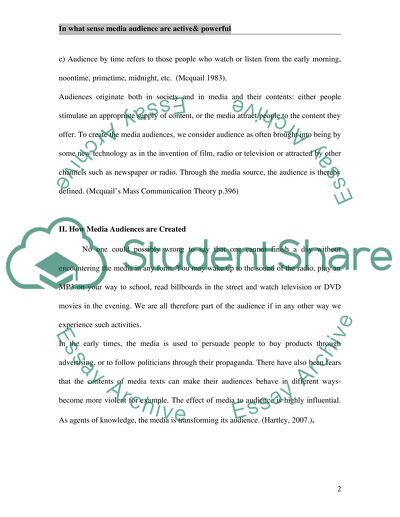Cite this document
(“In what sense are media audiences (a) active and (b) powerful Discuss Essay”, n.d.)
In what sense are media audiences (a) active and (b) powerful Discuss Essay. Retrieved from https://studentshare.org/miscellaneous/1553862-in-what-sense-are-media-audiences-a-active-and-b-powerful-discuss-with-reference-to-the-strengths-and-weaknesses-of-active-audience-theory
In what sense are media audiences (a) active and (b) powerful Discuss Essay. Retrieved from https://studentshare.org/miscellaneous/1553862-in-what-sense-are-media-audiences-a-active-and-b-powerful-discuss-with-reference-to-the-strengths-and-weaknesses-of-active-audience-theory
(In What Sense Are Media Audiences (a) Active and (b) Powerful Discuss Essay)
In What Sense Are Media Audiences (a) Active and (b) Powerful Discuss Essay. https://studentshare.org/miscellaneous/1553862-in-what-sense-are-media-audiences-a-active-and-b-powerful-discuss-with-reference-to-the-strengths-and-weaknesses-of-active-audience-theory.
In What Sense Are Media Audiences (a) Active and (b) Powerful Discuss Essay. https://studentshare.org/miscellaneous/1553862-in-what-sense-are-media-audiences-a-active-and-b-powerful-discuss-with-reference-to-the-strengths-and-weaknesses-of-active-audience-theory.
“In What Sense Are Media Audiences (a) Active and (b) Powerful Discuss Essay”, n.d. https://studentshare.org/miscellaneous/1553862-in-what-sense-are-media-audiences-a-active-and-b-powerful-discuss-with-reference-to-the-strengths-and-weaknesses-of-active-audience-theory.


